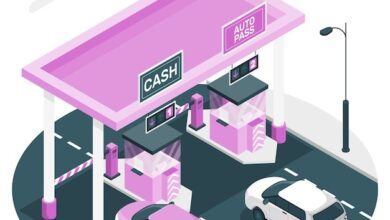The extra $600 unemployment benefit keeping millions of Americans afloat is about to expire—just as jobless claims are back on the rise
The nation got another dose of bad economic news Thursday as the number of laid-off workers seeking jobless benefits rose last week for the first time since late March, intensifying concerns the resurgent coronavirus is stalling or even reversing the economic recovery.
And an extra $600 in weekly unemployment benefits, provided by the federal government on top of whatever assistance states provide, is set to expire at the end of the week. It is the last major source of economic help from the $2 trillion relief package that Congress approved in March. A small business lending program and one-time $1,200 payment have largely run their course.
With the count of U.S. infections passing 4 million and the aid ending, nearly 30 million unemployed people could struggle to pay rent, utilities, or other bills and economists worry that overall consumer spending will drop, adding another economic blow.
“I’m going to be broke,” said Melissa Bennett, who was laid off from her job at a vacation time-share in Myrtle Beach, South Carolina. “I’ll be broke-broke. I want to go to work, I want health insurance, I want a 401K. I want a life; I have no life right now.”
Without the extra unemployment benefits, Bennett will receive just $200 a week, and she’ll have to decide whether to pay her mortgage or her utilities first.
More than 1.4 million people applied for jobless benefits last week, the Labor Department said Thursday, up from 1.3 million the previous week. That is the first increase since March and 18th straight week that it has topped 1 million. Before the pandemic, applications had never exceeded 700,000. An additional 975,000 people applied for aid under a separate program that has made self-employed and gig workers eligible for the first time.
The news sent stocks slumping on Wall Street, with the S&P 500 recording its worst loss in nearly four weeks. Uncertainty across markets helped gold touch its highest price in nearly nine years.
The weakening of the labor market has raised fears the economy will shed jobs again in July, after two sharp hiring gains in May and June.
Analysts say the economy can’t improve until authorities can control the spread of the virus, a need that is complicating the reopening of businesses and schools.
Adm. Brett Giroir, assistant secretary of health and a member of the Trump Administration’s coronavirus task force, even suggested another shutdown might be necessary. He noted that nearly universal mask wearing, sharp restrictions on restaurant occupancy, and shutting down bars were nearly as effective in controlling the virus as another shutdown of all non-essential businesses.
“Now, if you don’t do that, and people don’t achieve those goals, particularly mask-wearing, there may be no alternative,” Giroir said on MSNBC.
Congress is negotiating another aid package that could extend the extra unemployment support, though likely at less than $600. With the extra $600, roughly two-thirds of the unemployed are receiving more in aid than they earned at their former jobs, research has shown — a finding that’s led Republicans to argue that it is discouraging people from returning to work.
On Thursday, Senate Republicans unveiled a $1 trillion package that would replace the $600 with an amount that would bring a laid-off worker’s jobless benefits to 70% of their previous income. Both parties have agreed on another $1,200 stimulus check.
Democrats in the House approved a $3.5 trillion package last month that would extend the $600 through January. Given the limited time available, Treasury Secretary Steven Mnuchin proposed Thursday that a bill dealing with jobless benefits aid to schools be considered next week.
Democrats say the Republican plans are not enough.
The new economic woes come as outbreaks worsen particularly in the South and West. In Florida, officials reported 173 new virus deaths Thursday, a new daily high that brings the overall toll to more than 5,500. Arizona topped 3,000 deaths, with 89 new deaths reported Thursday. More than 1,000 of those deaths were reported in the past 15 days.
Desperate to stop the spread of the virus and its resulting economic impact, a growing number of states have announced new or broadened mask requirements. A new survey from The Associated Press-NORC Center for Public Affairs Research finds three out of four Americans, including a majority of Republicans, favor requiring people to wear face coverings while outside their homes.
In one small step toward normalcy, many Americans eagerly welcomed baseball’s opening day, which arrived four months late, with two games set for Thursday starting a shortened season.
In contrast to the U.S., the outlook has brightened for some other major economies. Europe is forecast to rebound next year after it managed to shrink its coronavirus caseload. Unemployment in the 19 countries that use the euro has remained contained, reflecting aggressive government efforts to keep workers on payrolls.
And China has become the first major economy to grow since the start of the pandemic. Economists say China will likely recover relatively fast because of the Communist Party’s move to impose early and intensive anti-disease measures.
Last week, applications for unemployment benefits declined in many states that have been hard hit by the virus, including Texas, Florida, Georgia and Arizona. But claims rose in other states that are also seeing increases, however, including Louisiana, California, and Tennessee.
The U.S. government also said Thursday that the total number of people receiving jobless benefits fell 1.1 million to 16.2 million. That was a hopeful sign that even as layoffs remain persistently high, some companies are recalling workers. Yet that figure is still roughly 10 times what it was before the pandemic.
Unemployment aid accounted for 6% of all U.S. income in May, a greater share than even Social Security. Economists say it’s one reason why retail spending rebounded as quickly as it did in May and June. If the full $600 were extended, it would boost consumer spending enough to generate roughly 1 million jobs by the end of this year, Oxford Economics estimates.
The end of the added benefit coincides with the expiration of a federal moratorium on evictions on Saturday. That moratorium bars evictions of renters who live in federally subsidized housing, and without it, about 22 million people are at risk of losing their homes.
“It’s scary, it’s really scary,” said Victorita Raaen, 46, who was laid off in March from her job as a light and sound technician in Boise, Idaho. The extra payments helped her build up a thin financial cushion but once it goes away things will get significantly tighter, especially with no way of knowing when she might be able to work again. She figures she can live on ramen, hot dogs and peanut butter and jelly sandwiches for a while but might not be able to pay for gas.
“I want to go back to work,” she said. “I’d rather go back than sitting here earning unemployment.”
Real-time measures of the economy suggest that companies are pulling back on hiring and that more small businesses are closing permanently. Credit card spending has been stuck at about 10% below year-ago levels for nearly a month, according to JPMorgan Chase, after having risen steadily from mid-April to mid-June.
Data from the consumer-review website Yelp, which tracks millions of small businesses, shows that more such companies are permanently shutting down. Nearly 73,000 small businesses have closed for good since the pandemic intensified in March, up 28% from mid-June.
“Every time a business closes, that makes the recovery longer and harder, so that worries me,” said Ernie Tedeschi, an economist at the investment bank Evercore ISI.
Source: Fortune




